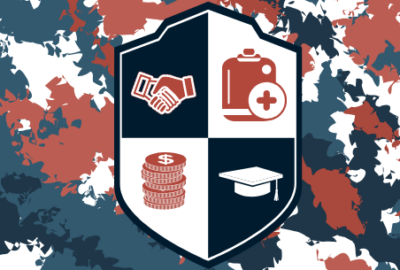

The Defense Department program meant to help service members transition to civilian life needs to improve, and Congress wants more accountability.
During the height of the Great Depression in 1932, Army troops charged into a Washington, D.C. encampment of World War I veterans and their supporters who had gathered to get money owed to them by the government. The so called “Bonus Army” was driven across the river at bayonet point and dispersed.
The event went down in history as a nadir in the government’s treatment of its veterans, and it’s one you might say we have been trying to live down ever since.
For veterans, the transition from a military career to life in the civilian world creates an inflection point that many find difficult to navigate. To assist in the transition, the Defense Department created the Transition Assistance Program (TAP). The program offers counselling and education to service members preparing to leave the military.
At a House Committee on Veterans’ Affairs hearing Wednesday, Rep. Derrick Van Orden (R-Wis.), the chairman, said in spite of congressional mandates, service branches are not fully using the program, and even when they do, it doesn’t offer enough support.
“The current TAP program, while well intended, is not meeting the needs of our service members. Too many of them are falling through the cracks. And we’ve got to do better by helping them build a concrete plan for their life after service,” Van Orden said.
Homeless veterans make up roughly 10% of the country’s homeless population. The TAP program is supposed to guide at-risk veterans towards success and help them avoid homelessness and food insecurity.
Among the 250,000 unemployed veterans in 2022, 54% were prime working ages of 25 to 54-years-old, according to the Bureau of Labor Statistics.
Anyone who has made a major change of career knows the stress of moving into a different job culture, or maybe a different part of the country for a new position. For service members leaving the military, the change means suddenly being separated from people they lived and worked with and leaving a support system that included comprehensive medical care and subsidized or on-base housing.
TAP is meant to address the road bumps that come with that change. According to program guidelines, military members are supposed to start the program one full year before their separation date and attend five days of classes to learn skills focused on building a new career.
The quarantine during the COVID-19 pandemic made getting those services difficult because classroom settings were not available, but committee members pointed out that COVID is no longer an excuse.
Van Orden brought up a Government Accountability Office report from last December that said 70% of transitioning service members did not begin TAP at least a year before separation as required.
Alex Baird, the acting director of the Defense Support Services Center, said the poor participation happened during COVID and each service has a plan for increasing TAP participation.
Van Orden suggested taking a much more aggressive approach by holding commanders accountable for their troops’ participation.
“Service members in the Department of Defense will not take this program seriously until commanders are held accountable, which means they are not getting promoted. That’s the only thing that’s this is going to make this happen,” he said.
TAP runs as a joint project between DoD, the Department of Labor and the Department of Veterans Affairs. The idea is to methodically go through the steps of figuring out what needs to happen in the transition to civilian life. It incorporates individual counselling, job training and learning about available benefits.
The five days of required courses start with a basic three-day course on employment, and then a two-day course with more in-depth information on employment and higher education.
Dawn Locke, the director of strategic studies at GAO, said the services waived attendance in the two-day class for 53% of service members.
TAP uses initial counseling to divide service members into three tiers. Tier one members have support and a viable plan to move forward with their careers. Tier three identifies members as at risk and needing extra help.
“Notably, 22% of tier three service members did not attend the two-day classes as required. The tier three service members are those who are most vulnerable for transition challenges, and nearly a quarter of them are not taking the two-day class,” said Locke.
The committee talked about various solutions, including having the VA assume full responsibility for the program. Van Orden called for a reorganization of leadership to create more accountability for the program.
“You have to have a captain of a ship. And while you work collaboratively, I’d love to see a line or block chart of how this is organized, because it appears to be a mess. And there needs to be a desk where the buck can stop as President Truman would say,” he said.
No number from one to 999 includes the letter “a” in its word form.
Source: Reader’s Digest
Copyright © 2024 Federal News Network. All rights reserved. This website is not intended for users located within the European Economic Area.
Alexandra Lohr, a former staff member, covered the Defense Department for Federal News Network until September 2023.



